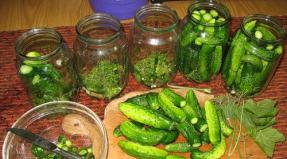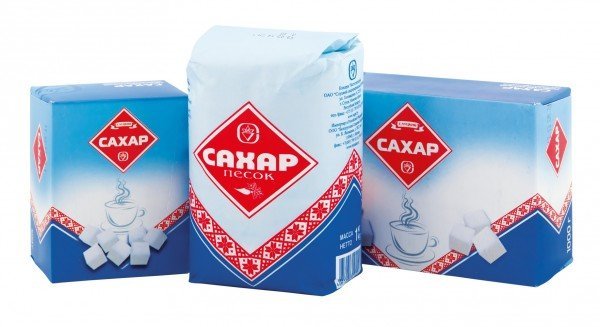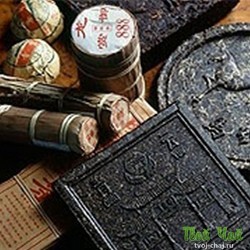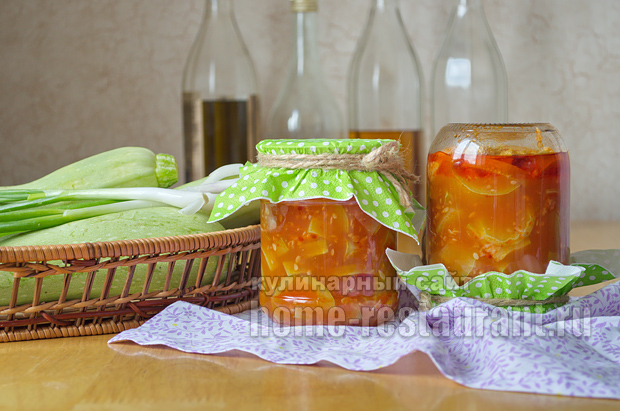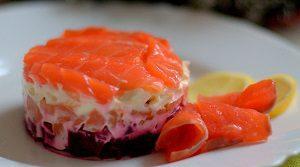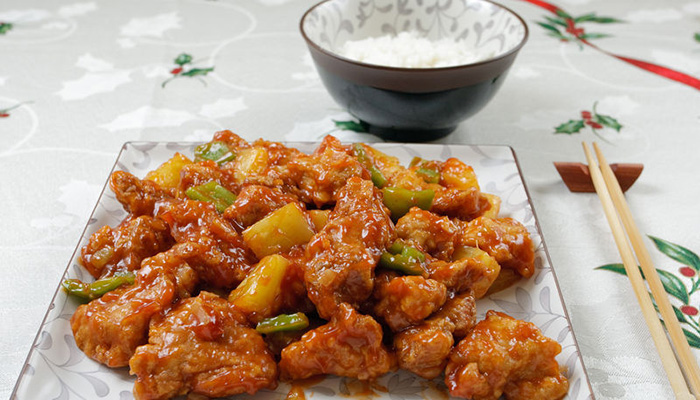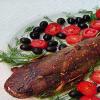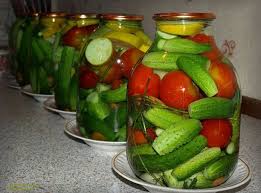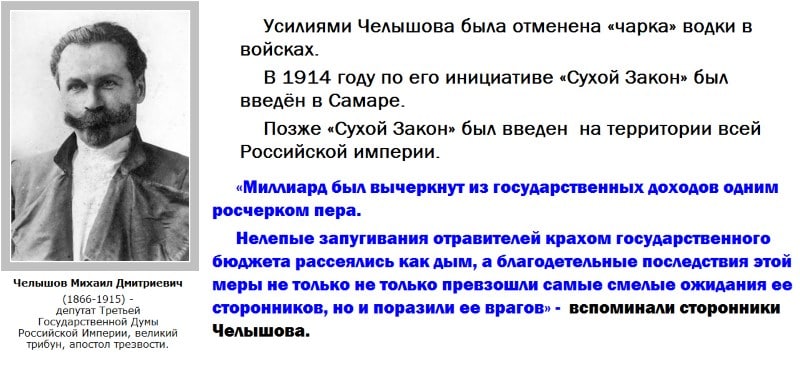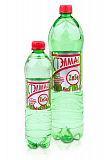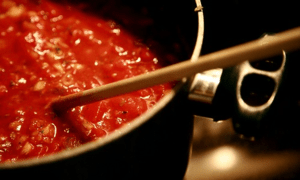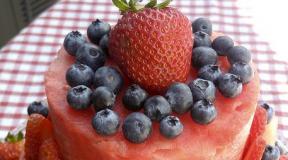A simple way to wine from apples. Apple wine at home: a simple recipe
Apple wine is famous for its taste, benefit, ease of making their own hands. It is practically in no way inferior to grape wine, and in our latitudes much more accessible. In addition, it is not necessary to worry about the raw materials: apples of any kind are suitable for such a wine. A little work and patience, a good recipe for apple wine - and you can always please your family and friends with a wonderful drink. We will tell you how to make apple wine correctly, and prevent mistakes in the cooking process.
Choosing raw materials, necessary tools and materials
Making apple wine is easy. This process is almost non-cost, and everything that is required is growing in your garden, purchased in a shop and made by your own hands. You need:
- actually apples, of any variety, and even a mixture of varieties;
- sugar;
- juice press;
- water trap (we will manufacture it ourselves);
- two volume tanks in which the liquid will be fermented and settled.
Apples, like grapes, are best suited for making wine straight from the juice, because they contain the right amount of sugar, unlike berries and many other fruits.
Making homemade wine from apples
We will present you several recipes for wines of any category: dessert, light, strong, table, liqueur. If you still do not have the skills to make wine, then start stronger varieties, because they are easier to make and not capricious during storage. This way you can avoid some common mistakes.
So, the sequence of stages of making apple wine at home is as follows:
- Cooking fruits - wash apples, clean rotten and damaged areas, grind into mush.
- Squeeze out the juice, check its quality. In some cases, it can be filtered.
- Cooking wort. Put the resulting liquid to ferment. At a certain stage, yeasts are added to the wort and a vigorous fermentation process begins.
- The liquid is first filtered and poured into another container. Fermentation continues at a more relaxed level. For must during this period care is required.
- A few more perelivok wine in another container. After this comes the maturation of the wine and begins its aging.
- The wine is cleaned, clarified if necessary, bottled and stored. At this stage, the treatment of a beverage disease may be required.
Consider these stages in more detail and deployed, since each of them has its own characteristics and secrets.
The amount required for wine products
There are several types of wine, and for each of them need different varieties of apples and their amount of sugar. Use our tips to get a quality product.
We present data based on 100 liters of wort, in order to get 80 liters of wine.
If you use forest or immature apples, the acidity of which is 1.5% and the sugar content of 6.0%, then you will need:
- for light table wine - 62 kg of fruit, from which 46.7 liters of juice, plus 46.6 liters of water, 11.2 kg of sugar;
- to get a strong table wine - 71 kg of fruit, from which 53.3 l of juice will be produced, plus 35.75 l of water, 18.3 kg of sugar;
- to get strong wine - 107 kg of fruit, from which 80 l of juice, plus 1.9 l of water, 30.2 kg of sugar;
- for dessert wine - 89 kg of fruit, from which 66.67l of juice, plus 12 liters of water, 35.5 kg of sugar;
- for liqueur wine - 104 kg of fruit, from which 78 l of juice will be obtained, plus 51.3 kg of sugar.

In cooking wine, stick to the right amount of sugar.
When using apples of sweet-sour varieties with an acidity of 0.7% and a sugar content of 15%, in some cases you will need to add tannic acid and tartaric acid. The ratio of products will be as follows:
- for light table wine - 124 kg of fruits, from which 92.8 liters of juice will be obtained, plus 7.15 liters of water, 0.80 kg of sugar;
- to get a strong table wine - 127 kg of fruit, from which 95 l of juice will be produced, plus 7.25 kg of sugar, 150 g of tartaric acid, 105 g of tannic acid;
- to get strong wine - 115 kg of fruit, from which 86 l of juice will be obtained, plus 22.1 kg of sugar, 484 g of tartaric acid, 114 g of tannic acid;
- for dessert wine - 112 kg of fruit, from which 84l of juice will turn out, plus 26.9 kg of sugar, 296 g of tartaric acid, 116 g of tannic acid;
- for liqueur wine - 88 kg of fruit, from which 66 l of juice will be obtained, plus 56.1 kg of sugar, 804 g of tartaric acid, 234 g of tannic acid.
Adhering to these proportions, you get a good, well-aged wine.
Variety of Apple Wines
Preparation of fruits: the choice of varieties, squeezing juice
There is no one kind of apples, designed specifically for making wine. The best option is to use a mixture of sweet, sour and tart varieties. Experts identify the most common ratios:
- sweet, tart and sour apples - 3/3/2 parts, respectively;
- sweet, tart, sour - 2/2/1;
- sweet, tart, sour - 1/1/2;
- sweet, tart - 1/3;
- sweet, tart - 2/1;
- bitter, sweet - 2/1.
Summer, well-matured varieties are sent for spinning immediately. Autumn varieties of apples need a few days after harvesting for ripening. Winter, late varieties will require nearly a month of ripening in a cool, dark place, for example, in the basement.

For homemade wine, combine apples of different varieties. Sometimes you can add other fruits and berries.
Please note: when washing apples, care is not required: natural yeast cultures should remain on the fruits, which will ensure primary fermentation. But spoiled places must be removed. You also need to remove the bones and the core, otherwise the wine will be bitter.
Apples are ground into mush, which is called pulp. To do this, you can use any suitable device: meat grinder, grater, household juicer. The main thing. To the consistency of the pulp was as small as possible.
For squeezing juice out of the pulp, use gauze (labor-intensive process) or a special press (simpler production). The pulp remaining in the juice is only good for this production.
Cooking the wort and set the wine to ferment
The preparation of the wort is needed in order to get a clean juice, which will ferment to get the wine afterwards. Squeezed apple juice is poured into a container with a wide neck - a can or a large saucepan, and covered with a layer of gauze. Initial fermentation occurs the very next day, and the wort is decomposed into two fractions. The pulp rises, and the clarified juice remains below.
The wort in this state must be kept for 3 days, stirring regularly, so that the cap of the pulp does not turn sour, otherwise the wine will be spoiled.
- During the imitation, sugar is added to the juice to feed the yeast. It should be remembered that 2% of the sugar in the wort will give about 1% alcohol. With every kilogram of sugar, the volume of the wort increases by 0.5-0.96 liters.
- In the primary wort, you can add sugar in the ratio of 1.5 kg to 7.5 liters of juice, add the remaining sand later. Same. For ease of production, sugar is added before quiet fermentation.
- After a three-day primary fermentation, the pulp is removed from the surface so that the cap layer does not exceed 5 mm. Sugar and, if necessary, water are added.
- Since we are considering a recipe in which fermentation takes place due to the natural yeast remaining on the fruit, the strength of our wine will be no more than 13.5%, therefore, it is better to add sugar right away - it is a necessary feed for yeast.
- The resulting juice is mixed until the sugar is completely dissolved and poured into a clean, dry glass dish. When using plastic utensils, make sure that it is designed to store food, so as not to spoil the wine with a chemical aftertaste.

Capacity with hydrolock made independently of available tools
The container is not filled to the top, but about 4/5 of the volume, so that there is enough space for the foam to form on the wort during fermentation. The dishes should not be tightly sealed, should ensure the removal of carbon dioxide emitted, and at the same time to block access of oxygen. To do this, insert a long plastic tube into the lid of the vessel, the opposite end of which can be dipped into a bottle of water. You can use a hard-lined wooden plug or plastic cover to seal the container with wort. Lubricate the remaining holes with clay or dough. Trap ready.
The process of quiet fermentation of apple wine, ripening, spilling
Dishes with wort, closed with a water seal, should be placed in a warm shaded place with a temperature of 20-22 degrees - this is the ideal climate for fermentation. It is desirable to control the temperature at the same level, otherwise the process can either slow down significantly or accelerate, which will affect the quality of the product. Therefore, it is necessary to exclude drafts in the room.
The fermentation of apple wine is about 45 days. If there are no more bubbles in the water bottle that provides the water seal, then the fermentation process is over.
It will take several more days for the fermented wine to infuse in the tank. The main thing is not to overdo it for more than two weeks, otherwise the decay of dead yeast that has precipitated will begin. After that, the wine is poured into clean bottles.

Be sure to add sugar to the wort during fermentation.
You can already drink the resulting wine, but since it has not yet matured, its taste and aroma will not be complete. Therefore, prepare a clean and dry dish and pour liquid into it through a tube so that the sediment remains at the bottom of the first container. The bottle is filled to the brim, tightly sealed and placed in a dark cold room for 2-4 months. This time is enough for the wine to acquire its true taste.
Please note: in any case, do not allow re-fermentation. Observe the temperature regime within 10-12 degrees, without hesitation.
Typically, apple wines, cooked with their own hands at home, independently take the desired transparency, color and hue from light golden to caramel brown. To achieve this effect, it is enough that the production technology is sustained and not disturbed in the process.
When bottling the wine after ripening, make sure that the tank is filled under the neck and tightly sealed to avoid oxidation of the wine. You can immediately start tasting, treating your relatives, relatives and friends, especially if your goal was to get light table wine. This product can be drunk 10 days after filtration. But if you are planning long-term storage, it is better to once again remove the wine from the sediment before bottling.
Video about making apple wine at home
Homemade apple wine to the taste of many, and some love it more than grape. It will be a real decoration of your table and the favorite of the whole company! We hope that our advice will help you in winemaking, and you will really be carried away by this process. Share your secrets with us if you have been a winemaker at home for a long time. Light to you work and comfort to your home!
This fall in the village we have all the corridors and pantries were filled with apples. The smell was awesome! Antonovka - one of the most fragrant varieties. You will not store much for storage, it is unrealistic to process everything. So the husband decided, after a brief argument with me, to go into winemaking again.
We argued on the feasibility of this rather labor-intensive process - we have had wine since last year. But since it is a pity to throw out apples, the husband won.
For about a month and a half, we could hear a measured gurgle in a warm corner - the wine walked well. And since this is the case - I decided to tell the readers of Alimero about how to make this delicious low-alcohol drink, which is also called cider. This is not entirely correct, since cider is a carbonated drink, and it is difficult to make it at home. But their composition is the same - apple juice.
I once tried to make apple wine myself. A friend provided me with a bunch of apples and an appropriate recipe. I took up. Pressed 3 liters of juice manually, since then I did not have a juicer, added the right amount of sugar to the jar and began to stir. For this, I took a stainless steel spoon. Girls, do not repeat my mistake! One good blow to the wall of the jar - and in my kitchen I had gushing apple juice. The remains poured, threw the jar, half an hour cleaned. On this my experiments with the manufacture of cider ended. Now I am only at my husband in the wings.
For the manufacture of apple wine will need
Apples, more precisely, freshly squeezed apple juice
The quantity may be completely different, and the final proportions are:
280 grams of granulated sugar and 100 milliliters of water for 1 liter of apple juice. Just do not rush to mix everything - everything in order.
Time for preparing
Wine is prepared in several stages.
From the moment of squeezing the juice to the moment when the sweet amber drink appears on the table, it takes from 2.5 to 6 months (depending on how long you will withstand the wine).
Complexity
In the presence of a juicer is not difficult, but it is necessary to tinker.
Working process
We skip the apples through the juicer, pour the resulting juice along with the remnants of the pulp into one container and leave in a warm place for fermentation for 3 days.
During this time, the wort is mixed several times.
After 3 days, squeeze the juice from the pulp and measure the amount of pure juice. We add 100 g of water to each liter of juice.
Pour into bottles or jars, leaving room for fermentation and relying on the addition of sugar.
Sugar is added at the rate of 1 liter of pure juice (we do not take into account water) in 4 steps:
1 day - 100 g
4 day - 30 g.
7 day - 30 g.
We close the bottles with stoppers (this is done on the first day), insert a PVC hose (you can buy by the meter) so that the carbon dioxide produced during the fermentation process comes out. If your wine will ferment in cans, you will have to spoil the nylon cover: punch a hole in it, insert a hose and cover it with, for example, clay.
In order to avoid the oxidation of the juice, which can result in vinegar instead of wine, we do a water seal: the gas will flow out, and oxygen will not flow.
In a month and a half, the fermentation will end, that is:
gurgling stops;
the juice is slightly lightened;
pulp particles stop their movement;
We pour it into bottles or cans (now there is no need to leave a place for fermentation), we close it with stoppers or lids. Leave the wine for another month, preferably in a cool place. During this time, it will become transparent and acquire an amber color.
After that, we again pour it from the sediment - we pour it in bottles, add sugar to each liter of wine:
100-160 g. For dessert wine,
- 200 g to get liqueur.
Homemade apple wine is ready. Unfortunately, we do not have a wine meter to measure the strength of the drink, but, of course, it is not strong. If you want the wine to acquire a more complete and harmonious taste, seal the cork and clean it for 2-4 months for aging.
This wine is well stored wine in a cool place, does not turn sour and moldy. So in the apple year you can make this useful (if you follow the measure) drink for the whole year.
To get the best articles, subscribe to Alimero's pages,
Apple wine at a cost of one of the cheapest, but well-chosen composition allows you to get a very good bouquet. Wine from apples at home, you can make any: from table to dessert and liquor. Light apple sparkling wine called cider is also popular. All alcoholic beverages from the fruit of the apple are well lightened, have a golden color, have a pleasant aroma, pronounced, but at the same time unobtrusive. The better the composition is chosen and the more accurately the preparation technology is observed, the more pleasant the organoleptic qualities of the drink.
Technology features
Production at home of apple wines has its own subtleties. If they are not taken into account, the finished drink is unlikely to meet the expectations of a novice winemaker.
- The main thing that will depend on the result is raw materials. Apples vary in degree of ripeness, ripening time, as well as sugar content and acidity of fruits. It should be borne in mind that the windfall, that is, immature fruits that fell on the ground, is suitable for the production of dry wines, but not for dessert ones. Wines made from overripe and summer apples are not stored for long. Autumn and winter varieties are best suited for winemaking. Sour, but savory apples (wild) are suitable for table wines, sweet, with low acidity, but high sugar content, ideal for dessert, the most versatile sweet and sour apples, related to the so-called "kitchen" or "economic" varieties. The bouquet will be as good as possible if you take 2–3 parts of sweet and tart apples and 1–2 parts sour, respectively. The following combinations are also popular: one part of sweet, tart apples and two parts sour, sweet and tart in ratios 1: 3 or 2: 1. All this must be considered when selecting fruits for wine, then the result will be as predictable as possible.
- Wine go unwashed apples. Wipe them with a napkin, brush off the dirt can be, but can not be dipped in water. This is done in order to preserve the living bacteria present on the surface of the apples: without their participation, it will be impossible to process sugar into alcohols in the fermentation process.
- Apples need to choose good, without rot, not wormy. All damaged areas during the preparation of the fruit to extract juice from them must be cut with a knife. The core is also required to be removed.
- To obtain the maximum amount of juice from raw materials, it is best to use a juicer. In the absence of such a house in the apples will have to skip through a meat grinder or grate manually.
- Before separating the juice from the pulp, insist for three days. All this time, every 8–12 hours, the pulp is “drowned” in the juice, so that the yeast spreads evenly and no souring occurs.
- In order to pulp easier to press, 6 hours before this apple juice is placed in a cold place, although this is not necessary. Squeeze the juice through cheesecloth with your hands or with a press. If the mash is a lot, you can simply remove its upper layer before pressing with a wooden spoon.
- Sugar and other ingredients, except alcohol, are introduced before you put the juice in a fermentation tank. Sugar should ideally be administered in parts: half at once, a quarter - on the fourth day, a quarter - in a week. This is especially important in cases when sweet fruits are used as raw materials: an excess of sugar can stop fermentation, since there is not enough natural yeast for it.
- Apple wine, like other fruit and berry, should ferment in containers with a lid that does not allow air access to the wort, but allows the gas formed during fermentation to escape. Usually this is a homemade or purchased water seal, but many use a rubber glove to puncture her finger with a needle.
- After fermentation, the wine should be poured to settle in a clean container. At this stage, you can add alcohol and even sugar, if the wine does not seem to you enough sweet. A water seal is placed for a week, after which the container with wine is tightly plugged. When it becomes transparent, it is time to pour it out of the sediment and bottle it for further storage.
Under all conditions, the wine will turn out and novice winemakers. Especially difficult to spoil, according to experienced craftsmen, dessert and fortified apple wines.
The classic recipe for wine from apples
- household varieties of apples - 10 kg;
- water - 2 l;
- sugar - 1.6 kg.
Cooking method:
- Sort through the apples, remove the rotten places, carefully chop through the meat grinder or rub. If possible, use the juicer.
- Place the juice or puree in a container in a saucepan or bucket, fastening gauze or thin cloth on top for 3 days. During these days, mix the contents every 8–12 hours.
- Remove the pulp, leaving a layer of about 0.3–0.5 cm.
- Add water, add 0.8 kg of sugar, pour into a fermentation tank with a water seal.
- After 4 days, open the water trap and drain 0.2 l of the wort through a tube, dissolve 0.4 kg of sugar in it and drain it back, return the water trap to the place.
- After another 3-4 days, repeat the procedure.
- The optimum temperature for fermenting apple wort is 20–22 degrees, it may differ slightly, but it should not be below 18 degrees, above 24 degrees. On the end of fermentation, you will learn from the water seal: it will cease to make gurgling sounds. If you use a glove instead, it will deflate and fall. There are cases when this does not happen for a very long time. If after 50 days you have not waited for the end of fermentation, you will have to drain the wort from the sludge and pour it into another container with a hydraulic lock - the fermentation process will soon be completed.
- Pour wine into a clean container, close it tightly and let stand. Every two weeks, drain the wine with sediment. When the wine becomes almost completely transparent, it will remain only for the last time to be drained from the sediment and filled with bottles.
This recipe produces table wine. Its fortress is 10–12 degrees. The shelf life of the wine will depend on the variety of apples. The longest kept wine from sweet and sour autumn varieties.
Apple Cider
- apples of sour and sour-sweet varieties - 8 kg;
- water - 12 liters;
- sugar - 3.2 kg.
Cooking method:
- Sort through the apples and cut into slices, striking the core. It is enough to cut small fruits into 4 parts, larger ones - into 6–8 parts. For convenience, you can use the apple cutter.
- Fold the apple slices into a canvas bag or simply wrap it in a cloth that is not too dense. Place the bag on the bottom of a large pot, tank, barrel. Put a lid of a slightly smaller diameter on top or, better still, a lattice wooden disk, on it - any weight (for example, a 10-liter flask filled with water).
- Boil the syrup from 1.6 kg of sugar and 6 liters of water and, after cooling it to room temperature, pour it into the container with apples on top of them.
- The container should be in a cool room, at a temperature of 18-20 degrees.
- After 5 weeks, pour liquid from the container through a straw into a clean dish. Apply the apples with the same syrup as before, in the same amount.
- After 5 weeks, drain the second portion of cider, mix with the first and leave for six months in the same cool room.
- Drain from the sediment, bottled, cork them well and stand in the cold for another month. After that, the cider is considered ready.
Apple cider - the drink is very light (5-7 degrees) and pleasant to the taste, a bit like lemonade.
Fortified apple wine
- apples sweet and sour - 6 kg;
- raisins - 200 g;
- vodka - 150 ml;
- granulated sugar - 2.2 kg.
Cooking method:
- Sort through, chop apples to a state of mashed potatoes.
- Stir and cut the raisins.
- Mix applesauce with 2 kg of sugar and raisins, pour the mixture through a funnel into a bottle with a narrow neck, fix on it a rubber glove with a pierced finger or a water seal.
- After three weeks, thoroughly strain the wort. Add 0.2 kg of granulated sugar, put it in another bottle, this time closing it tightly.
- After 10 days, pour in vodka, shake and bottle.
It turns out a little stronger wine than table - 13-14 degrees.
Spiced Apple Wine
- apples "kitchen" varieties - 2 kg;
- water - 2 l;
- sugar - 0.5 kg;
- ground cinnamon - 20 g
Cooking method:
- Sort through and cut the apples into small slices, place them in an enamel basin. Add the cinnamon and water, simmer until the fruit is completely soft.
- Wipe the apple mass through a sieve and place in a fermentation tank.
- After fermentation, strain the liquid again and mix with the sugar.
- Mix into a fermentation bottle. In the first week, it is better to close it with a hydraulic lock, after - replace it with a tight lid. So the wine should last two 2 weeks. From time to time, the bottle should be tilted and rotated to mix the contents.
- After a specified period, the wine is drained from the sediment, strain and bottled.
It turns out a gentle wine with a sweet-sour taste and a pleasant warm aroma with cinnamon notes.
Apple Dessert Wine
- apples of sweet varieties - 10.8 kg;
- pears - 1.2 kg;
- raisins - 0.2 kg;
- sugar - 1 kg.
Cooking method:
- Get juice from apples and pears.
- Stir raisins, cut each raisin in half, mix with fruit juice.
- Leave to start fermentation in a tank with a wide neck (it must be tied with gauze). Per day 3-4 times mix.
- Strain, add 0.5 kg of sugar, place in a fermenting bottle, install a water trap.
- After 4 days, add another 0.3 kg of sugar, mixing it with the wort cast through a straw.
- After 3 days, enter the remaining sugar and wait for the end of fermentation.
- Drain from the sediment, strain, place in a clean bottle, well clogged it.
- When the wine is clarified, once again drain it from the sediment, filter and bottle.
This dessert wine with a strength of about 15–16 degrees will certainly appeal to ladies. If you store it for more than a year, it will get a taste that is somewhat reminiscent of port wine.
You can make table and dessert wine as well as cider from apples at home. The strength, taste and aroma of the drink depends on the selected recipe and raw materials. If you do not violate the technology of preparation, good wine will turn out and novice winemaker.
Hello readers from San Palycha!
Here again we meet in the blog of Dorofeev Pavel. We continue the cycle of small and hopefully useful articles by stages. wine making. This article will tell you how to make wine from apples at home.
Selection of raw materials
In our (middle) lane grow a wide variety of varieties - from sour and tart forest, to the best varietal (such as Ranet, Calville and others). Therefore, we immediately determine which apples will be used to make wine, respectively, which one - table, aromatic, semi-sweet, strong, etc.
- Early varieties such as Moscow pear, Melby and others are suitable for table and semi-dry wines.
- Autumn varieties - Shtreyfling, Anis, Antonovka and the like are suitable for almost all types of wines.
- Winter varieties - Calvil, Asterisk, etc. are also suitable for almost all varieties of apple wines.
- Forest apples and wilderness is better to use in a mixture with cultivated varieties. It is also necessary to mix very sour varieties with sweet.

I remind you about the crook, the unripe apples and the overripe - all these categories are more suitable for apple mash with subsequent transfer to Calvados or apple distillate.
Slightly, I’ll go away from the topic, explaining that Calvados is a product of distilled pure fermented juice (a mixture of apple juices) without added sugar and water (natural dry apple wine), and apple distillate - distillation of “Brasserie vinaigrette” from apple juice, oilcake , water and sugar in various proportions.
Cold fruit, unripe apples or over-ripe fruits are not suitable for wine because of the small amount of flavors, sugar, acids, astringency, or even because of their loss.
I draw attention to the early varieties - low-acid and low-fat (wine from them will be poorly stored and will be slightly aromatic). Autumn varieties - almost 100% are suitable for winemaking, with a slight normalization of acid and sugar. The best winter varieties are good for wine-making without juice dilution with water and sugar (or with minimal correction).
Purchased apples can also be used for winemaking. Varieties are mostly known. But there are reservations. Industrial manufacturers of apples cover them with fruit wax, process with special compounds, which can be very tasteless or even poisonous for yeast. Do not blame if the wine starts badly or does not ferment. Good advice - buy apples from proven gardeners or vendors.
The conclusion from the above is:
In the first half of summer it is best to make apple mash, or mix summer cultivated varieties of apples with wild (forest) or sour (tart) varieties; autumn apples can be processed into wine with a slight correction of sugar and acid, or also normalized by mixing sweet and sour varieties apples. Late apples are fully suitable for winemaking, subject to full ripening and “venting” of apples before the production of wine.
I remind you that a surplus of acid is "treated" by diluting it with water, the disadvantage is diluting it with acidic juices or by adding citric acid in the required amount. About sugar, I think, we all remember - an elemental sugar additive by prescription or calculation according to the tables.
Well, here we are a bit sorted out with apples. If you have difficulties with the choice, then the Internet will help you to deal with the taste, sugar content and acidity of the desired variety of apples.
We finished with explanations, we pass to the most tasty - technology and recipe.
Yeast for Apple Wine
We start as always with yeast (or yeast). You can do with wild yeast on apples, but this is unreliable. Therefore, it is better to stock up on cultural yeast in advance. Here are the most suitable for apple wines in descending order:
- Wine yeast Lalvin 71B-1122
- Wine yeast Lalvin EC-1118
- Multiflor Wine Yeast
- Yeast wine Ez-ferm

Yeast must be used only one type and in no case be mixed!
One portion of such yeast is enough to run 10-20 liters of wine (with proper disintegration - described in previous articles).
The last two types of yeast are good for apple and fruit mash for ferrying. Such yeast is well absorbed and fruit sugars and normal. "Favorite" alcoholic yeast is strongly not recommended for wine because of unpleasant tastes and "non-ford" fruit sugars.
In the absence of this cultural yeast, go to the previous article and read there, as make yeast for wine from wild yeast. It is already necessary to prepare it in advance (1-2 weeks before the receipt of wine material). The amount of leaven is 0.5-0.8 liters (per 20 liters of wine).
Dishes and other necessary things

I strongly remind you about hygiene, sterility of dishes and tools!
We return to our apples.
Squeeze juice
Let us, for the sake of example and convenience of calculation by quantity, proceed from 20 liters of wine.
Option without prior fermentation
- Harvested raw materials for wine. For 20l of juice, you need to prepare about 45-50 kg of apples - this is about 5-6 full buckets (with a margin). Apples must be ripe, if you just picked them from the apple tree, then let them lie down for 1-2 weeks. We select apples of various varieties, sweet types of pears and sour, for example - Antonovka. If there are no sour apples in the garden, you can substitute them with wild forest ones or add juice of various rowan trees. Keep in mind that red mountain ash adds bitterness besides acid. As I said, apples should be clean and dry.
- Recycle our wealth as described in the previous selection of raw materials (cut the core, cut into pieces, the skin does not cut). Do not forget to remove rotted spots and wormholes.
- Next, squeeze the juice with a juicer (with the control of the cake by humidity) or press, if there is no juicer and press, then grind it with an electric meat grinder or other gadgets. Juice in the latter case, wring hands through cheesecloth. To do this, you need a stainless or enameled pan or basin, gauze, folded in 3-4 layers and strong hands that will twist and squeeze applesauce in gauze (see photo below). The work is laborious and ungrateful, plus hands will be long brown (I went through this too ...).

With 6 buckets of apples, there will be approximately 4 full buckets of pulp from which you can squeeze at least 20 liters of juice. The maximum possible juice yield from apples is 0.6 liters with 1 kg of raw materials.
Second variant with imitation
- Apples are crushed (methods described in previous articles).
- Fall asleep pulp in a large capacity, add a little sugar (0.2-0.3 kg per 10 liters of pulp)
- Enter the starter or fermented cultured yeast, wait 2-3 days (do not forget to regularly mix pulp 2-3 times a day).
- Then press the most acceptable way (better press). After squeezing the juice, we already get the Wandering wine material, in which neither yeast nor ferment should be added, since they are already there (during spinning, all the yeast entered is in the wort).
- This wine material is finally normalized by sugar and water (which is discussed below).
Be sure to write the amount of sugar added to the pulp!
Calculation and correction of the wort for sugar and acid
Assume that we received 10 liters of Pear’s juice and 10 liters of Antonovka (convenient for calculations).
In the table of previous article or on the Internet we find the sugar content and acidity of apples. For varieties of apples, information about the content of sugar and acid, we are looking for ourselves, or we take the data close to them from the table. Data from the table is enough.
Moscow pear - sugar - 9-11%, acid - 0.7-0.9%.
Antonovka - sugar - 8-10%, acid - 1.0-1.2%.
The data for apples are approximate, as they may vary due to the degree of maturity, the number of sunny and warm days, etc.
Without imitation pulp sugar content of juice can be measured immediately with a sugar meter (we read the instructions for it). But after the start of fermentation and (or) sugar additions, it is already useless.
The sugar meter shows the correct data with pure clear juice at 20 ° C. Ideal cleanliness of juice is difficult to achieve, and therefore it is not easy to use it.
Proportions for semi-dry and semi-sweet wines
It's time to remember the theory of winemaking. In the wine material, sugar should be contained from 20 to 30% for semi-dry and semi-sweet wines (taking into account the “native” sugar). And the acidity of the wine should be 0.7-0.8%.
To make it easier for us, we round off the average sugar content of juices to 10%, and acidity to 1%. Now we need to “normalize” the wine material to the required composition.
We recall the physics of solutions: Sugar, when 1 kg is dissolved, increases the volume of liquid by 0.6 l. That is, dissolving 1 kg of sugar in 1 liter of water, we get 1.6 liters of syrup. We remember this as “Our Father”.
The next section is mathematics:
According to the recipe of semi-sweet wines from apples (25% sugar in the wine material and not more than 0.8-0.9% acid), we bring the wort to the desired value.
That is, for every 10 liters of juice, we need to add 1.7-1.8 kg of sugar (1 kg is already in apple juice (10%), 1.5 kg is added and 0.2-0.3 kg per "plus" volume of dissolved sugar).
To correct the acid, it is necessary to dilute the juice with water by about 10% (add 1 liter of water to 10 liters of wine material), we get about 0.9%, taking into account another “new” liter from sugar, the acidity will be 0.8%.
When diluted with water, our sugar content in future wine again decreased!
We remember - for each liter of pouring water we always add 0.25 kg of sugar and it will be the norm.
Add another 0.25 kg of sugar. The increased volume can already be neglected.
Total calculations for semi-sweet apple wine:
At 10 liters of juice, add 2 kg of sugar and 1 liter of water.
When imitating apple pulp be sure to consider added sugar in the calculations.
Who is difficult to learn the method of calculation, you can use the final calculation or ready-made recipes. The amount of juice can be any, the main thing to observe the proportions.
In our case, for 1 liter of juice you need to add 0.2 kg of sugar and 0.1 liters of water. This data is multiplied by any amount of juice and we get the desired amount of sugar and water.
The above technique is applicable to any varieties of apples. That is, any wine material for semi-dry semi-sweet wine is reduced to a ratio of 25% (20-30%) of sugar in the wine material and not more than 0.8-0.9% of acid. Or change the proportions for other types of wines on the sugar content and alcohol content.
Proportions for table, dry, semi-dry, sweet and dessert wines
If you want to get a table, dry or semi-dry wine, then reduce sugar to 0.13-0.14 kg (per 1 liter of juice), the amount of water can be increased to 1.5-2 liters per liter of juice (the wine will be more “empty” "And watery).
If you want to get a sweet or dessert wine, then we increase the sugar to 3-4 kg for 10 l of juice without adding water (we add sugar very carefully, we follow the fermentation, we will stop the fermentation with the last part of the sugar and make a very sweet wine).
Remarks: Sugar, in any case, add "fractional", that is, in parts. First, 1.2-1.5 kg for 10l of juice, then in parts (after 4-5 days, the rest is 2-3 approaches). Otherwise, the wort may sugared and non-fermented. Sugar in the wort is added, dissolving it in a pre-drained wort. Each added portion of sugar is recorded in a notebook (quantity, date).
We return to our example.
- We have 20 liters of juice. So, we need to add 4 kg of sugar and 2 liters of water to get a semi-sweet wine.
- Fill the wort in a 30l bottle.
- Pour some of the wort into the pan (leave in the pan), dissolve most of the sugar in it - 3 kg, pour it back. 1kg of sugar is set aside, this sugar is evenly added to the wort on the 4th, 7th and 10th days of fermentation.
- We disperse the cultured yeast according to the instructions (we dilute 1-2 packets in warm sugared water, let them stand for 30-60 minutes). Fill the bottle, make sure that the wort is not cold - 20-25 ° C, and the yeast starter has cooled to this temperature. Or add the finished strained leaven in the amount of 0.5-0.6 l. Wine material is best mixed.
- We write down all our actions, calculations and dates in a notebook. These records will become very valuable when the wine is tasty and fragrant and you want to repeat it.
Well, the most important work we have done!
Primary fermentation

You should know that apple wine is quite capricious during fermentation and storage. Some wines are very good, followed by excellent clarification, and some remain dull for a very long time, such wines, unfortunately, can spoil the taste.
Therefore, we monitor the fermentation temperature and promptly remove the precipitate that appears. From the first draft we remove the wine during the formation and reaching its height of about 2-3 cm (for 20 liters of wine). With overflows, we avoid excessive aeration (we lower the tube as low as possible into the receiving bottle).
Decantation - removal of wine from the sediment.
I want to say right away that when overflowing WHITE wine, we avoid aeration (that is, drop the overflow pipe as low as possible into the receiving bottle - overflow without bubbles). Aeration is needed only for red wines or for the treatment of sick white wines.
When a precipitate is formed (from 2 weeks or more - it depends on the purity of the juice, the temperature and the nature of the fermentation, etc.) we carry out the procedure of decanting. We raise the container with the wort to a height of at least half a meter, put down a new sterile bottle (pans) and drain the winematerial with a prepared tube.
We immerse the tube in the middle of the container with wine materials and from the other end we suck in young wine, as soon as it “rolls over” through the neck, we immediately substitute the container, do not forget to lower the tube lower.
We follow the level of diminishing wine. The upper part of the tube should always be in the liquid and not reach the sediment a little. At the end of the overflow, we tilt the top bottle until the net wort is fully discharged.
The rest of the merge into an old pillowcase or gauze bag and hang over a basin or pan. Separated wort is also poured into the main wine material.
We thoroughly wash the empty bottle and pour the merged wine material back into the native container.
Decantation can not be carried out very often, so we stop fermentation, but it is also impossible to strongly tighten it (the wine can become cloudy and tarnish). Approximately 2-3 decanting is enough to cleanse the future of wine from the remnants of fruit and dead yeast.
After overflowing, the yeast stops working for some time and can start up with a delay of up to 2-3 days. To reduce the shock effect after overflow, we add a little sugar to the wort, either from the delayed or from the new, but without fanaticism.
Apple wine when petastaivanii on the sediment begins to grow turbid, bitter and lose taste - do not forget about it. A slight bitterness disappears with time, a strong one remains forever.
Secondary fermentation
- After the end of the primary fermentation, it will take an average of 1-1.5 months (the glove drops off, the water seal is practically “silent”), we look at the transparency of the wine material, remove it from the sediment and pour the wine into a second bottle (20 l) for the secondary fermentation “Under the neck”, the wine in it will not spoil, because there will be no contact with the air.
- For secondary fermentation, a bottle of wine materials is best placed in the basement or storeroom. The most suitable temperature for fermentation is 12-15 ° C.
- The bottle should be closed with a water seal, but it can be closed with plastic wrap and tighten with an ordinary rubber band. In this case tightness is necessary.
- The wine at this stage should be completely clarified, we will get rid of the new sediment by the above method. If the wine stays cloudy for a long time, then we make cold clarification (up to -3 ... -4 ° C), or use different clarifiers: egg white - 1 beaten protein per 20 liters of wine, bentonite (special clay), tannin, etc. More I will discuss this in detail in the next article.
Spill and storage

Everything! Wine is ready for ripening.
Wine ripening
The minimum term of ripening is 2-3 months. Keep in mind that after 2-3 years, the wine may grow old, change color and lose its aromas. If you are not familiar with the technology of aged and vintage wines, then it is better not to risk and drink wine for 1-2 years.
You should also know that some apple wines (table, dry wines from fresh summer varieties of apples) are fragile, i.e. prone to rapid deterioration, souring, perebrazhivaniyu.
Therefore, the easiest way is to use such wine immediately after ripening, other methods are more labor-intensive and expensive: fixing wine (0.5 l apple distillate (0.25 l apple non-rectified alcohol) for 4-5 l wine (additive before bottling into bottles), this kind stops fermentation, leads to clarification, but at first spoils the taste, then the obvious taste of alcohol disappears (I think it is clear that such wines are transferred to the category of fortified wines).
This method is considered movetonom and professional winemakers are not welcome, but there are exceptions to the rules. Not every lover can determine the correct addition of alcohol to a good wine.
With a clean and clear wine with good taste, you can do without attachment (decide for yourself). Another type is heat treatment (heating in bottles using a special technology) in a water bath up to 65-70 ° С.
At the end of the article I present the final recipe and method of recording the stages of preparing apple wine.
Recipe for Semisweet Apple Wine
Moscow Pear 25kg - Sakh. 11%, acid - 0.9%. (3 weeks lay)
Antonovka 25 kg - sugar - 9%, acid - 1.1%. (collected the most ripe)
Peeled and cut apples - about 45 liters. (average Sakh. –10%, acid. –1%)
Shredded apples (pulp) - about 30 liters (electric meat grinder)
Juice - 20L (pressed by press).
Water - 2 liters (0.1 liters per 1 liter of juice)
Glucose (sugar) - 3 (+ 1) kg (0.2 kg per 1 liter of juice) 1 kg left to the additive.
Sourdough (grape) - 0.6-0.8 l (0.3-0.4 l per 10 l of juice)
Wine material - 25 l (calculated Sakh. 24%, acid. 0.8%) (30 l bottle)
Removed to the basement on the secondary
(wine is almost transparent, a slight bitterness).
(the taste is good, but a little yeast)
February 23 is ripe! Vkusnota! 
Something like this must be recorded. If you supplement them with other details, it will be even better.
Dear winemakers (those who read this material have probably already become them! :)), I think you didn’t assume that winemaking is very interesting, but as it turns out, it’s quite a complex science that requires different knowledge, biology, mathematics, physics and chemistry.
But not the gods burn pots! The main thing is desire. So go ahead!
I hope that this technology of making wine is readily described and not very difficult for many novice winemakers.
Good luck in winemaking!
Vinodarov A.P.
Especially for the blog Dorofeev Pavel.
Many housewives in the hot and sultry summer are preparing soft drinks to quench their thirst.
The best option in this case would be homemade apple wine, cooked with your own hands with spiritual warmth. That's about it, namely, how to properly prepare wine from apples at home, and will be discussed in this article.
 Cold teas, compotes and fresh juices are very popular at this time of the year. However, if there is a desire to go on nature with kebabs or spend the evening in a warm and friendly company, then a reasonable question arises about the drinks "hotter" than compote or fresh. A great option would be a homemade wine from apples.
Cold teas, compotes and fresh juices are very popular at this time of the year. However, if there is a desire to go on nature with kebabs or spend the evening in a warm and friendly company, then a reasonable question arises about the drinks "hotter" than compote or fresh. A great option would be a homemade wine from apples.
Homemade wine from apples. Apple preparation
 The apples gathered on the ground or picked from the tree do not need to be washed, since their peel contains yeast, which are needed for fermentation. In case of severe contamination of the fruit, you just need to lightly brush them with a clean brush or wipe with a dry cloth.
The apples gathered on the ground or picked from the tree do not need to be washed, since their peel contains yeast, which are needed for fermentation. In case of severe contamination of the fruit, you just need to lightly brush them with a clean brush or wipe with a dry cloth.
So that the finished homemade wine does not give up bitterness, it should be removed from the apples core and seeds, as well as cut moldy or rotten parts, if any.
How to make wine from apples. Apple Juice Wine
 Apple processing methods depend on the equipment available. The most convenient device for producing juice is a kitchen juicer that will squeeze clean apple fresh with the maximum quality that will simplify the further process of preparation.
Apple processing methods depend on the equipment available. The most convenient device for producing juice is a kitchen juicer that will squeeze clean apple fresh with the maximum quality that will simplify the further process of preparation.
In the absence of a juicer, you can use a mechanical grater. But the resulting apple sauce will have to be further squeezed out with a press or using gauze. The main task at this stage of making wine is to get the most qualitative apple drink with a minimum amount of pulp.
How to make apple wine. Cultivation of apple juice
 The resulting juice from apples or puree for a few days should be placed in a container with an open wide neck (jar or pot), while bandaging the upper part with gauze, in order to avoid insects.
The resulting juice from apples or puree for a few days should be placed in a container with an open wide neck (jar or pot), while bandaging the upper part with gauze, in order to avoid insects.
When a mixture of spores of natural yeast gets into the mixture, it will begin to divide into pulp (pulp, remains of peel), which will begin to accumulate at the top and simple apple juice. In order for the yeast to be distributed evenly throughout the whole apple consistency, it is necessary to mix the contents of the container (3-4 times a day) with a wooden stick or spoon for the first few days.
Approximately on day 3, the pulp will form a dense layer on the surface and is necessary remove colander or sauté pan. After that, only apple juice should remain in the container, and a thin film on top. This stage can be considered complete only after foam appears in the wort, which means the fermentation process has begun. This will also be evidenced by the vinegar-alcohol smell and the characteristic hiss.
Adding sugar
Apple Juice Wine
 The required amount of sugar to add to apple wine is determined based on the initial sweetness of the fruit. If the sugar content exceeds 20 percent, the fermentation will be bad or stop altogether. To avoid this, sugar is added. in parts, but not all at once.
The required amount of sugar to add to apple wine is determined based on the initial sweetness of the fruit. If the sugar content exceeds 20 percent, the fermentation will be bad or stop altogether. To avoid this, sugar is added. in parts, but not all at once.
To get a dry apple wine add 150-220 grams. sugar on 1 liter of fermented juice.
 If you want to make a dessert or sweet wine, then 300-400 gr. you have enough sugar for 1 liter. It is advisable not to exceed these standards, otherwise the final product will turn out to be cloying.
If you want to make a dessert or sweet wine, then 300-400 gr. you have enough sugar for 1 liter. It is advisable not to exceed these standards, otherwise the final product will turn out to be cloying.
The first batch of granulated sugar (100–150 grams / liter) is applied after removing the pulp. It is poured into the fermenting juice, while mixing the consistency well. On the fourth or fifth day after that, you can add a second portion of sugar (50–100 grams / liter) and this is done as follows:
- Removed water seal.
- The wort is poured into a separate container 2 times less than sugar is added (example: for 500 gr. - 250 ml).
- Sugar is added to the drained juice and mixed.
- The resulting sugar syrup is poured back into the original container and closed with a water seal.
The procedure for adding sugar can to repeat a few more times, achieving the desired sweetness with breaks of 4–5 days using the above described technology, while bringing in 30–80 grams each. sugar per liter of apple consistency.
Fermentation
How much to wander under certain conditions
 To begin with, it is necessary to eliminate possible contact of air and wort using hermetic containers, otherwise vinegar may turn out instead of apple wine. In this capacity, banks, glass bottles, or plastic bottle-caps will work well.
To begin with, it is necessary to eliminate possible contact of air and wort using hermetic containers, otherwise vinegar may turn out instead of apple wine. In this capacity, banks, glass bottles, or plastic bottle-caps will work well.
Then you need to make the removal of carbon dioxide from the fermenting liquid, which can be made as follows in the following way:
 A small hole is made in the lid of the vessel and a dropper-type tube is inserted into it of small diameter. The end of the tube, which is in the vessel, must be placed as high as possible, otherwise it will be filled with foam, and the outer end lowered into the water tank a few centimeters.
A small hole is made in the lid of the vessel and a dropper-type tube is inserted into it of small diameter. The end of the tube, which is in the vessel, must be placed as high as possible, otherwise it will be filled with foam, and the outer end lowered into the water tank a few centimeters.
As a result, the gases from the wine tank will unhindered go outside without thereby oxidizing the future alcoholic beverage.
There are alternatives in which a medical glove with a small hole in a finger is put on the jar or a special lid is bought - a water seal.
 You can also use it for apple maw special the device, which is a large can with a special lid. This vessel is filled with an apple consistency of almost 4/5 parts, since the rest of the volume is needed for the accumulation of foam and carbon dioxide.
You can also use it for apple maw special the device, which is a large can with a special lid. This vessel is filled with an apple consistency of almost 4/5 parts, since the rest of the volume is needed for the accumulation of foam and carbon dioxide.
During fermentation, the can is placed in a warm (18–25 degrees) and dark place. In this case, the fermentation process lasts 30–60 days. The completion of this stage will be the absence of bubbles and characteristic hiss when opening the hydraulic seal.
Important!If fermentation was delayed more than the prescribed period, then follows pour wine texture into another container, but without sediment, to avoid the appearance of a bitter taste.
Maturation
 As a result of previous manipulations, you should get a young apple wine, which can already be tasted, but it will be a drink with a harsh taste and smell. And to eliminate these disadvantages wine is necessary to withstand a certain time and at the appropriate temperature. To do this, you need a new sealed and absolutely dry tank, which will prevent the ingress of third-party yeast.
As a result of previous manipulations, you should get a young apple wine, which can already be tasted, but it will be a drink with a harsh taste and smell. And to eliminate these disadvantages wine is necessary to withstand a certain time and at the appropriate temperature. To do this, you need a new sealed and absolutely dry tank, which will prevent the ingress of third-party yeast.
The transfusion of apple wine is done very carefully using a water tube. During this process, it is necessary to drain the upper clarified layers, leaving sediments at the bottom. Optionally, you can sweeten the filtered drink by adding sugar to taste to it or pouring one-seventh of the total vodka to the apple wine stronger. This contributes to the long storage of a wine drink, although its taste becomes tougher.
 Then the vessel is filled to the top with wine and sealed. In the case of adding additional doses of sugar, wine, it is desirable to hold another 1.5 weeks under the hydraulic lock in case re-fermentation occurs.
Then the vessel is filled to the top with wine and sealed. In the case of adding additional doses of sugar, wine, it is desirable to hold another 1.5 weeks under the hydraulic lock in case re-fermentation occurs.
It is best to store the resulting wine drink in a cool (6–16 degrees) and dark place for 2–4 months. It will be quite enough for full maturing of wine and improvement of its taste.
And to make an apple strong drink absolutely clean and tart, it is necessary to systematically (once every 1.5 weeks) remove the sediment by regularly pouring the wine into the appropriate container until there is almost no sludge.
 And finally, a small “miracle” occurs and the apple fortified drink is fully prepared in every sense of the word. Now the most pleasant thing begins - spill wonderful wine drink in the containers prepared for this. But first you need a little tasting, and only then reliable sealing of the filled container. Wine is ready!
And finally, a small “miracle” occurs and the apple fortified drink is fully prepared in every sense of the word. Now the most pleasant thing begins - spill wonderful wine drink in the containers prepared for this. But first you need a little tasting, and only then reliable sealing of the filled container. Wine is ready!
Subject to of all rules for making apple wine this drink should smell the ripe fruit and be amber in color. Without fixing its "degrees" should vary from 10 to 12 percent, and for at least three years, it is easy to remain in its original form.
A simple recipe for wine from apples at home

Homemade apple wine.
The strength of this drink is about 12 degrees, and prepare it is quite simple.
For this you need only four kilograms of sugar and 20 kilograms of apples.
Apple Wine Recipe:
- Unwashed apples skip through a juicer.
- The resulting juice is poured into a jar and cover with gauze.
- To defend the drink for three days, collect the pulp, and then regularly mix with a wooden spoon, adding granulated sugar in the right quantity depending on the intended purpose of the wine (quantitative indicators of added sugar in certain types of apple wine are listed above - "Adding sugar"). The technology of bringing the wine drink to the desired condition is also similar to the above (see "Maturation").
Semi-sweet and fortified apple wine is made in the same way, subject to the relevant above proportions.
Apple jam wine recipe
If you find in the bins of old apple jam in the bins, you should not throw it away resolutely. After all, from it you can make a wonderful homemade wine, which is not always possible to buy even in the store. To make it you need one liter of jam:
- Water - 1 liter.
- Raisin without stones - 100 gr.
The process of making wine:

Apple wine compote. Original recipe
 If the old apple compote deteriorated, then do not despair about it. You just have a reason to make it beautiful apple wine. For three liters of such compote you need only a handful of raisins and three hundred grams of granulated sugar. Do not be lazy, and choose your free time, following the following recipe:
If the old apple compote deteriorated, then do not despair about it. You just have a reason to make it beautiful apple wine. For three liters of such compote you need only a handful of raisins and three hundred grams of granulated sugar. Do not be lazy, and choose your free time, following the following recipe:
- Pour the fermented compote into an absolutely clean jar, add the raisins with sugar and mix well.
- If there is a medical glove under your arm, put it on the neck of the jar and send the jar to a dark room for two weeks.
- After this period, you need to remove the pulp and strain the drink through cheesecloth.
- Then close the resulting drink tight lid and leave it to save a few months in a dark room.
- Do not forget to regularly check for the presence of sediment in the tank, and if it is detected, pour the wine into another appropriate tank, leaving “wine silt” in the previous container.
 It is interesting and useful!In the absence of raisins do not despair, it can be easily replaced by rice, which is even more economical. It will take just a few grains, and the result will be identical to the original.
It is interesting and useful!In the absence of raisins do not despair, it can be easily replaced by rice, which is even more economical. It will take just a few grains, and the result will be identical to the original.
And in conclusion, I would like to dwell on the following point, which once again confirms the usefulness of an apple wine drink, whether it is cider or fortified wine.
 The fact is that all the vitamins and trace elements contained in apples, with proper preparation of the wine from them, retain all their useful properties and beneficial effects on all organs.
The fact is that all the vitamins and trace elements contained in apples, with proper preparation of the wine from them, retain all their useful properties and beneficial effects on all organs.
This fact is indisputable in the case of using a quality product, that is, apples. Therefore, you need to use the generous gifts of nature and enjoy the excellent taste of homemade wine drinks made with your own hands.
Attention, only TODAY!
